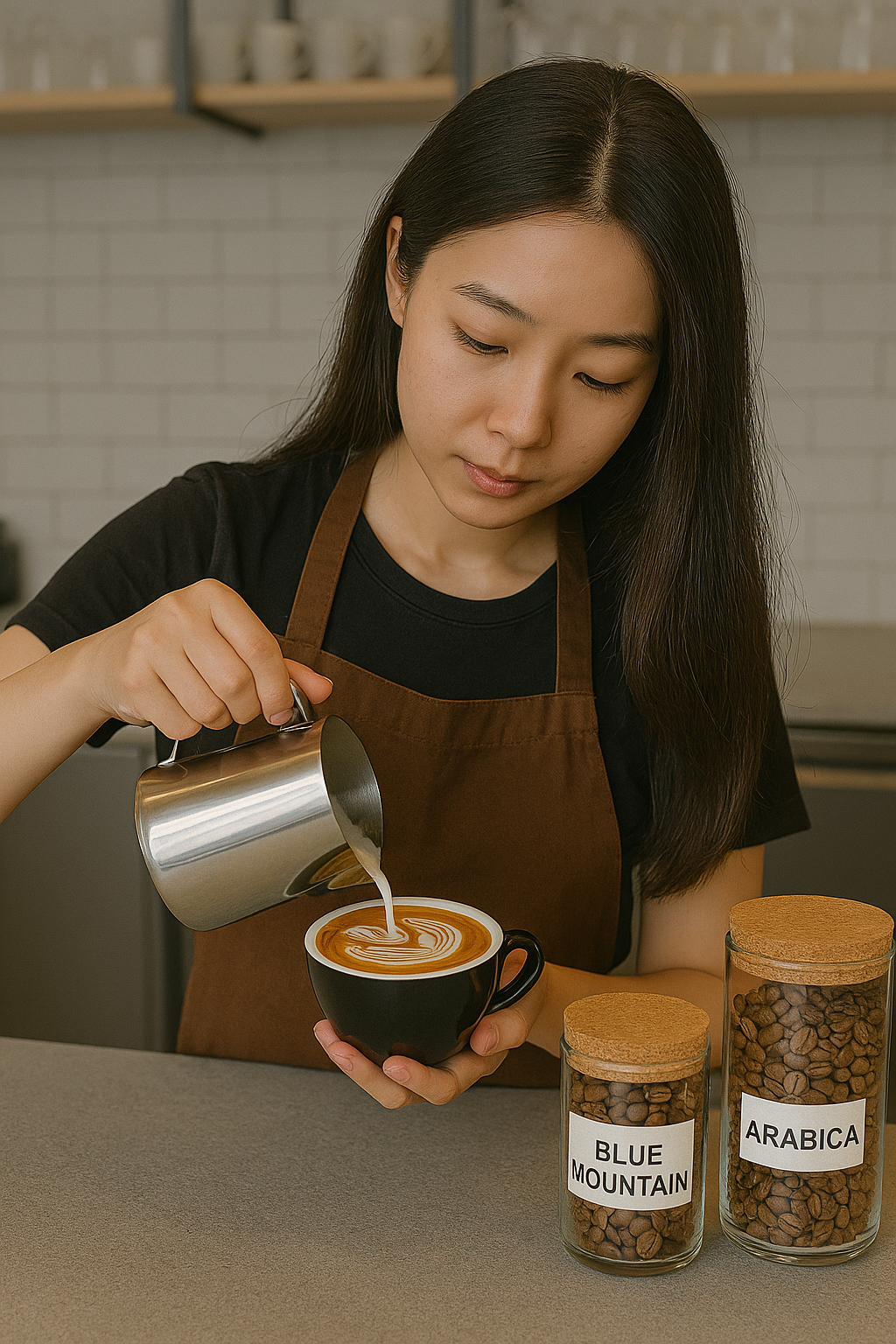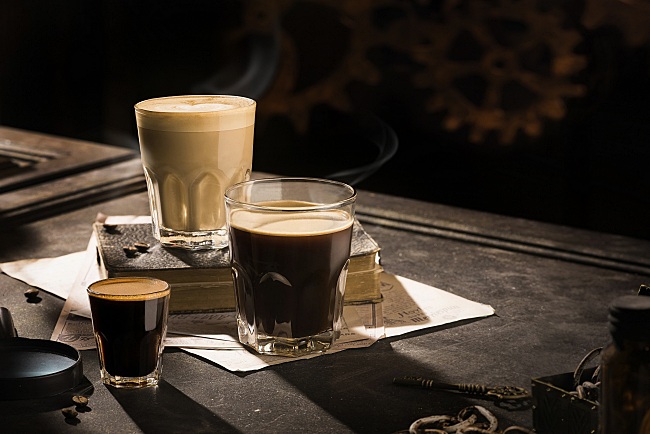Top Spots Serving SOE Single Origin Espresso Near You
Checking Out the Abundant Tastes of Coffee Beans: a Deep Study Espresso and Blended Coffee Beans
When you explore the abundant tastes of coffee beans, you reveal a complex globe where each selection brings its own character to your mug. Recognizing the origins, processing techniques, and roasting techniques can change your coffee experience. As you browse through the art of coffee and the creative thinking behind mixed coffees, you'll start to appreciate the subtleties that make each sip one-of-a-kind. What you'll find next could alter the way you enjoy your early morning mixture.
The Origins of Coffee Beans: Exploring Terroir and Taste Profiles
When you take a sip of coffee, you're not simply taking pleasure in a drink; you're experiencing an abundant tapestry of flavors formed by the beans' origins. Each region produces distinct taste accounts influenced by environment, altitude, and dirt. Beans from Ethiopia usually rupture with intense, fruity notes, while those from Colombia tend to use a balanced, nutty sweet taste.
As you discover different origins, you'll observe how terroir-- the environmental aspects affecting a crop-- plays an essential role - Single Origin Espresso. The exact same coffee range can taste significantly various depending on where it's expanded
When you take into consideration these elements, you begin to value the intricacy behind your cup. Each sip narrates of the land and the farmers that nurtured the beans. So, next time you indulge, consider the trip your coffee took prior to it reached your hands, and appreciate those elaborate flavors that mirror its beginning.
Understanding Coffee: The Art and Scientific Research Behind the Mixture
When you assume concerning coffee, it's not almost the solid flavor; it's also about the techniques that bring it to life. Understanding just how various preparation methods influence preference can change your brewing experience. Let's discover the details of coffee prep work and discover the distinct taste accounts that make each cup special.
Coffee Preparation Techniques
Espresso preparation is both an art and a science, combining accurate techniques with a deep understanding of coffee. To start, you'll wish to pick high-grade, fresh roasted beans and grind them carefully for perfect extraction (Single Origin Espresso). The work dimension is important; as well coarse, and your coffee will be weak, also fine, and it'll be bitter
The outcome should be an abundant, luscious espresso with an attractive layer of crema on top. With practice, you'll grasp these techniques.
Taste Profiles Clarified
The world of coffee offers a rich tapestry of taste accounts that can raise your coffee experience. When you take that very first sip, you'll notice a balance of sweet taste, level of acidity, and bitterness. Each coffee bean lugs distinct notes, from floral and fruity to nutty and chocolaty. Light roasts usually showcase bright acidity and dynamic flavors, while dark roasts present deeper, bolder tones.
Understanding these profiles helps you pick the appropriate espresso for your taste buds. Try out different blends can reveal unexpected combinations. For example, a well-crafted mix could integrate the intense notes of an Ethiopian bean with the abundant, chocolatey touches of a Brazilian bean. Welcome the trip of uncovering espresso's diverse flavors, and you'll transform your coffee routine right into an interesting experience.
Processing Methods: Just How They Influence Taste and Aroma
While it could appear that the origin of coffee beans is one of the most considerable consider determining their taste and fragrance, the handling methods made use of post-harvest play a similarly necessary duty. You'll locate that these techniques can significantly alter the last taste account of your cup.
For instance, the washed procedure eliminates the fruit from the beans prior to fermentation, commonly causing a cleaner, brighter flavor. At the same time, the natural procedure leaves the fruit intact throughout drying, resulting in a sweeter, fruitier account.
Various other methods, like honey handling, strike an equilibrium, allowing some fruit mucilage to stay, providing an one-of-a-kind complexity.
Each handling strategy engages with the beans' intrinsic qualities, boosting or muting specific tastes and fragrances. So, when you sip that coffee or combined coffee, bear in mind that the trip from cherry to mug is influenced not just by beginning yet also by exactly how those beans were processed.
Toasting Techniques: Unlocking the Full Possible of Coffee Beans
Roasting techniques are necessary for disclosing the full potential of coffee beans, as they change raw, green beans into the aromatic, delicious coffee you appreciate. The choice of roasting method-- light, medium, or dark-- significantly influences flavor accounts. Light roasts protect the beans' all-natural level of acidity and fruity notes, while tool roasts equilibrium sweet taste and richness. Dark roasts, on the other hand, highlight strong, great smoky flavors.
A slower roast at reduced temperatures permits for complicated flavors to create, while a quicker roast can intensify anger. By grasping these techniques, you'll disclose a world of taste, raising your coffee experience to new elevations.
The Magic of Blended Coffee: Creating Unique Taste Experiences
Producing a distinct flavor experience with mixed coffee can transform your early morning routine right into an exploration of preference. By combining various beans from various areas, you can reveal a harmony of flavors that elevate your cup to brand-new heights. Each mix offers an unique profile, balancing body, level of acidity, and sweetness to develop something really unique.
When you choose a mix, you're not simply choosing a coffee; you're picking a journey throughout diverse landscapes and societies. Explore various mixes allows you to find your individual favorites, whether you appreciate fruity notes or rich, chocolatey touches.

Tasting Notes: Acknowledging the Subtleties in Your Mug
As you drink your coffee, you might notice a range of flavors dancing on your palate, each exposing the details of the beans. You may taste the bright acidity similar to citrus or the deep, abundant notes similar to dark delicious chocolate. The sweet taste can stimulate honey or sugar, stabilizing the total account beautifully.
Pay attention to the body of the coffee-- does it feel light and airy, or is it full and velvety? The surface, also, offers clues; a lingering aftertaste may hint at nuttiness or floral undertones.

Do not forget to discover the unique attributes of different origins, as each area presents unique flavors - Single Origin Espresso. As an example, Ethiopian coffees often existing fruity notes, while Colombian beans may showcase a more spherical sweetness. By acknowledging these nuances, you'll grow your recognition for each mug, raising your coffee experience to new elevations

Brewing Methods: Maximizing Taste Extraction for every single Bean
When you discover the different developing approaches, you'll uncover that each method can considerably impact the taste profile of your coffee. From French press to pour-over, each approach extracts various compounds, boosting or muting details notes. As an example, using a French press permits oils to remain in the mixture, creating a richer preference, while pour-over highlights quality and brightness.
Temperature level and grind size additionally play necessary roles. A coarser work functions best for chilly mixtures, while a fine work is perfect for coffee. Try out water temperature level-- between 195 ° F and 205 ° F-- can expose surprise flavors, as well.
Do not forget soaking time; a quick removal can lead to sour notes, while over-extraction may generate anger. By changing these variables, you can take full advantage of taste extraction and really boost your coffee experience. Delight in the trip click here now of uncovering what technique finest suits your palate!
Often Asked Concerns
What Is the Perfect Water Temperature Level for Brewing Coffee?
The suitable water temperature for brewing coffee's in between 195 ° F and 205 ° F. If you make use of water that's also hot, you'll over-extract tastes; as well cool, and you will not remove enough. Objective for that wonderful area for the very best brew!
Exactly How Does Work Dimension Influence Coffee Taste?
Work size substantially influences coffee taste. Better grinds remove extra oils and tastes, causing a bolder preference, while coarser grinds return a lighter taste. Readjusting work dimension aids you achieve your wanted coffee account.
Exist Wellness Conveniences Linked With Alcohol Consumption Coffee?

What Is the Distinction Between Arabica and Robusta Beans?
Arabica beans are smoother and sweeter, often featuring fruity tastes, while robusta beans are more powerful with a bitter preference and higher caffeine content. You'll observe these distinctions in scent and brewing experience.
Just How Can I Store Coffee Beans for Freshness?
To store coffee beans for quality, keep them in an impermeable container, far from moisture, light, and warmth. You'll keep their taste longer if you just grind what you need right prior to brewing.
Exploring the Abundant Flavors of Coffee Beans: a Deep Dive Into Coffee and Blended Coffee Beans.
When you check out the abundant flavors of coffee beans, you uncover a complex world where each range brings its own personality to your cup.When you take a sip of coffee, you're not simply appreciating a drink; you're experiencing an abundant tapestry of flavors formed by the beans' origins.Roasting methods are vital Get the facts for revealing the complete capacity of coffee beans, as they change raw, eco-friendly beans right into the aromatic, savory coffee you delight in.As you drink your coffee, you might observe a spectrum of flavors dancing on your taste buds, each exposing the complexities of the beans.